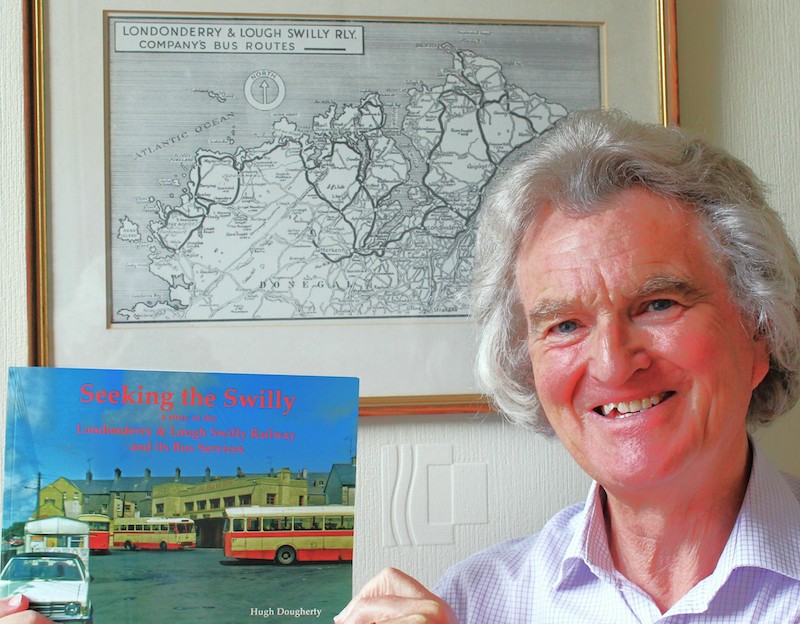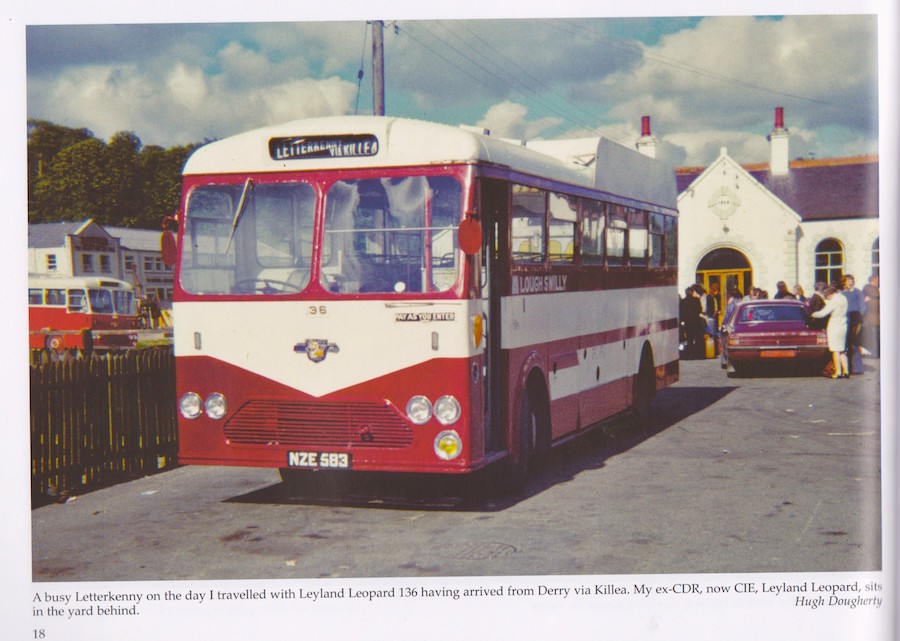A new book by Glasgow-based transport journalist, Hugh Dougherty, tells the story of his quest for remains of the Londonderry; Lough Swilly Railway.
The narrow gauge trains ran from Derry to Letterkenny, Burtonport and Carndonagh, and whose buses,
direct successors to the railway, ran for the last time in 2014 when the company was wound up.
Seventy-three-year-old Hugh, whose family has close Donegal connections, spent his summer holidays in
Glenties, as a teenager in the 1960s.
It was on trips up to the Rosses that Hugh became aware of the closed Burtonport line, and spotted the Swilly buses and lorries that had replaced the trains.
“I just had to find out more, and I’ve been looking ever since,” said Hugh.
“The book looks at the Swilly through my eyes as I found it and includes an interview I did at Letterkenny Station with Johnny Hannigan, the fireman on the ill-fated train, involved in the Owencarrow accident in 1925.
“I spoke to him in 1967, when he was still working for the Swilly on lorries at Letterkenny, and got a fascinating, first-hand account of the terrible night when the train was blow off the viaduct, and when Johnny saved lives and raised the alarm by walking through the dark and fierce storm to Creeslough
Station.”
The book also describes the difficulties faced by Swilly bus crews and passengers alike when crossing the border in 1974, when Hugh travelled from Letterkenny to visit the company headquarters at Pennyburn in Derry, and was nearly arrested by the British Army on his return journey!
Another trip from Ballyliffin to Derry and back in 1982, was much more straight forward, and Hugh tells how the Swilly served Innishowen faithfully from running its first train to Buncrana in 1863, right up until the company was wound up in 2014, so ending its reign as one of the oldest and still-operating railway companies in Europe.
“Speaking of Ballyliffin,” said Hugh, “When the railway came through the village in
1901, with the opening of the Carndonagh extension, there were high hopes by the
Swilly that it would become the Blackpool of Donegal, as crowds flocked on the new trains for a day out at Pollan Bay. Thankfully, Ballyliffin didn’t turn into Blackpool (!), but the railway did develop it as a resort, and a picture in the book shows an excursion train returning to Derry on a busy summer Sunday in the 1920s, when the platform had been extended to handle the heavy trains.”
The book also records what you’ll find today, if you seek out the Swilly, and features the replica signal at Tooban Junction by Buncrana sculptor, John McCarron, the Swilly carriage and crane truck in Foyle Valley Railway Museum, and the Newtoncunningham signal box, which is now houses the public toilet at Donegal Railway Heritage Museum!
Incredibly, Hugh has managed to track down the last Lough Swilly bus in operating condition. It’s a single deck Bristol, Swilly fleet number 452, which ran mainly on school services with the company from 2004 to 2007, and which was bought and restored by Salford-based bus fan, Tommy Mitchell, who takes it to vintage vehicle
rallies around Manchester, resplendent in its Lough Swilly colours.
“The book is a tribute to the now-lost and much-missed Londonderry; Lough Swilly Railway Company, on both rail and road and to recall the crews who ran it and the people who travelled on this fascinating system,” said Hugh. “It follows on from my book, ‘County Donegal Railway Bus Services’, published last year, and brings the
picture of Donegal’s two narrow gauge railway and bus companies up to date.”
Seeking the Swilly is available from Donegal Railway Heritage Museum, either at the museum, or through its website sales, costing Euro 18, including postage.
The book is also available directly from the publishers, www.stenlake.co.uk, Amazon and
bookshops.
Royalties are being donated to the museum.
*Hugh will launch his book and present an illustrated and entertaining talk on Seeking the Swilly and the stories behind the book, and will reveal how he avoided arrest in Derry in 1974!
The talk is at 3.00pm on Saturday 29 June, at Donegal Railway Heritage Museum,










